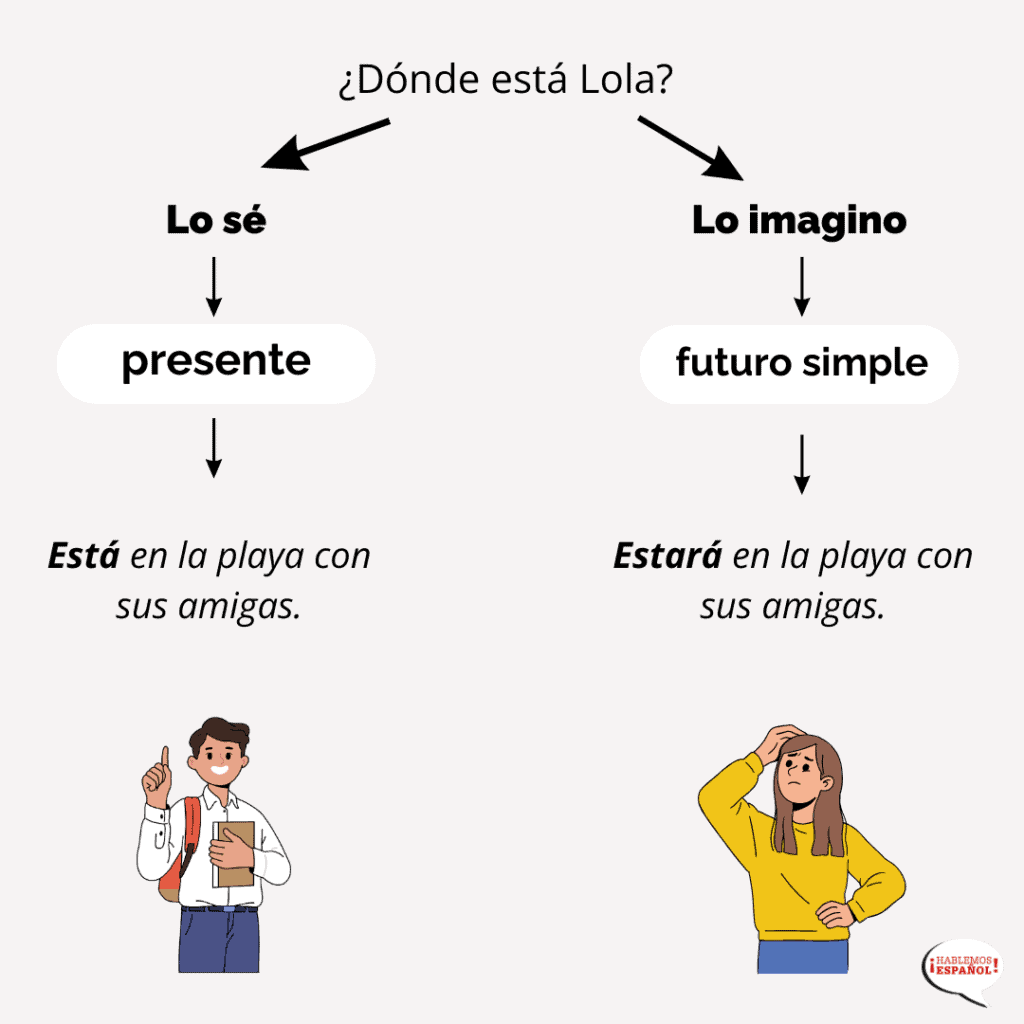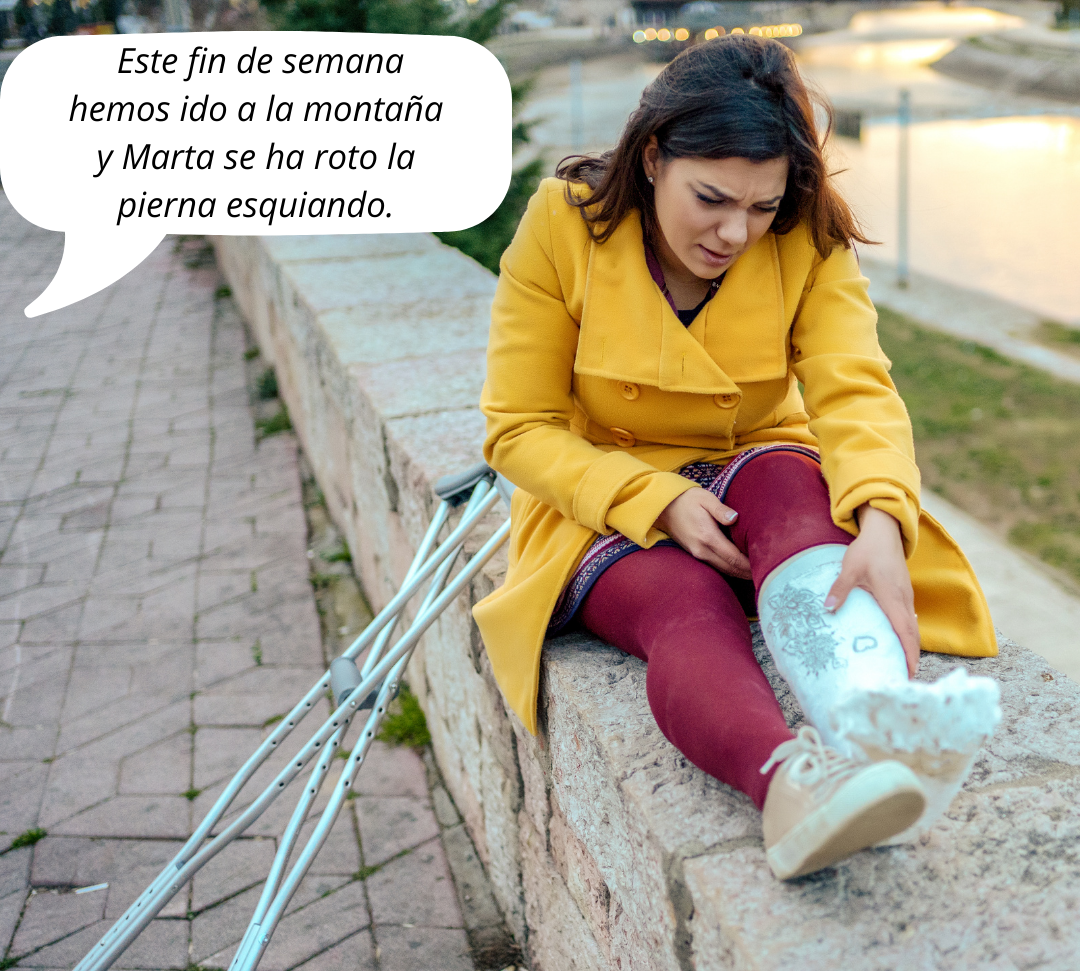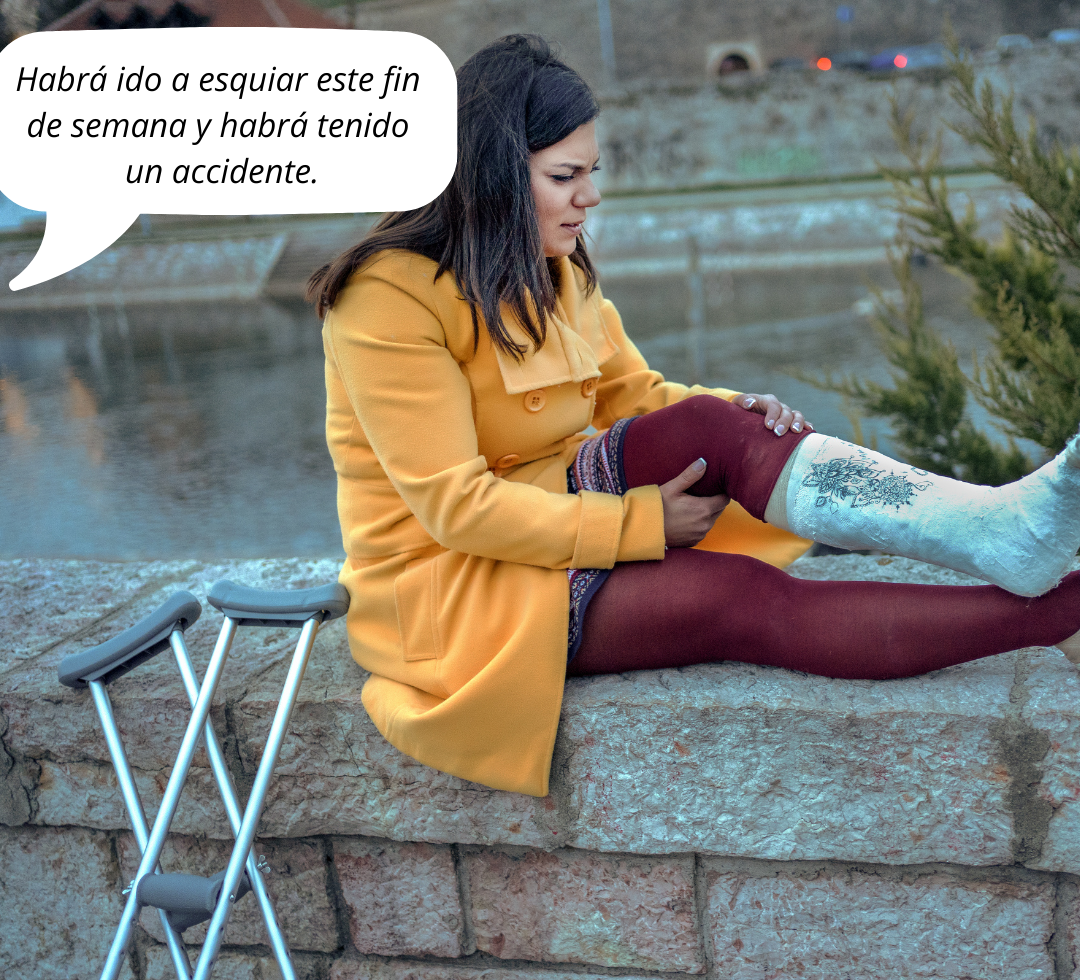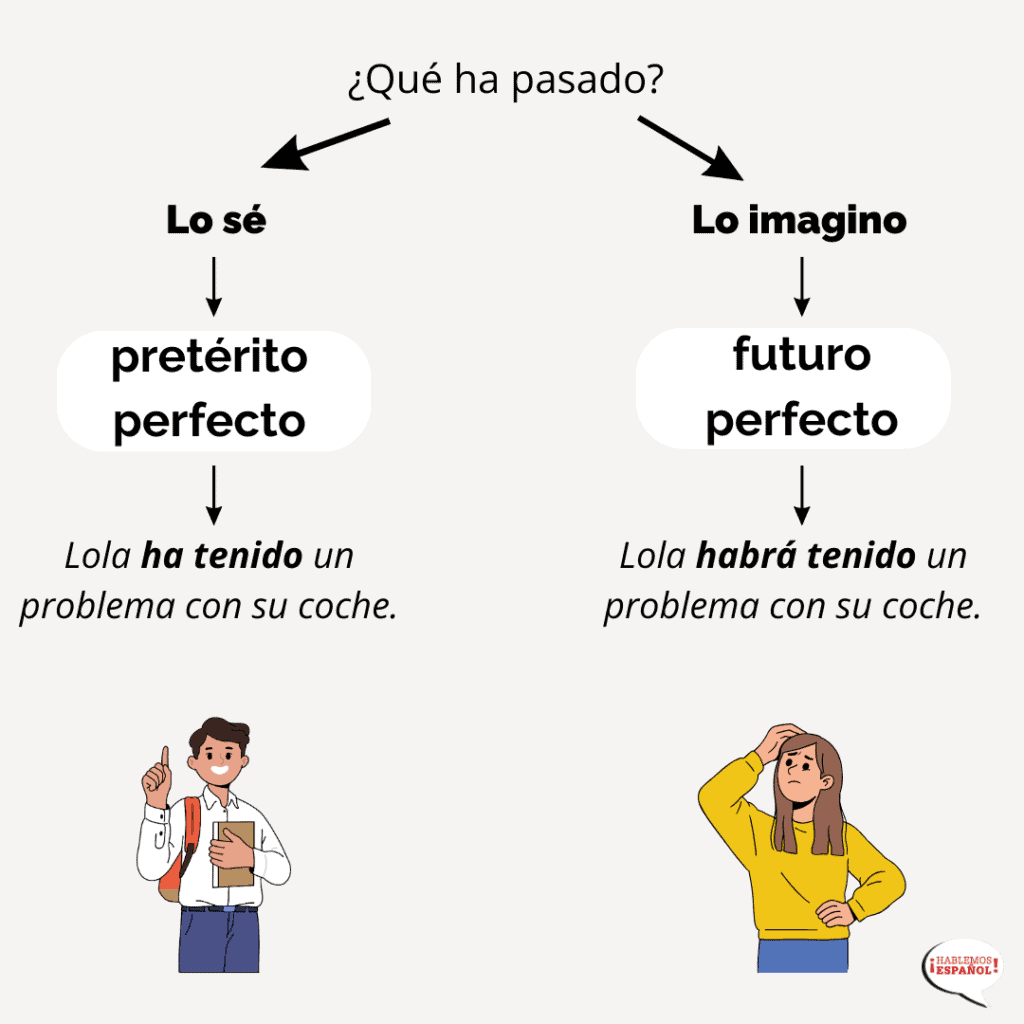Other Uses of Future Tenses in Spanish

-
Save
After reading and practising with our series about the future in Spanish, it’s time to go a step further and understand that future tenses are not only used to talk about events, conditions or predictions that have not happened yet. You may have heard or seen in a Spanish series someone using a future tense in a way that is unusual for you. After reading and practising with this post, the future tense in Spanish won’t be a mystery to you anymore.
We recommend trying to apply and practise with us without translating into your language, because, most probably, this option does not exist in your native language. Shall we start?
In this post you'll find:
- A different use of futuro simple in Spanish,
- A different use of futuro perfecto in Spanish,
- many practical exercises.
Wait a second… Have you missed our previous series about the future in Spanish? Don’t worry! Just click on any of the links bellow and keep learning with us!
Futuro simple or imperfecto
In Spanish when we have information or we are sure about something about the present, we use presente de indicativo. Have a look at these two examples:
¿Qué hora es?

-
Save
¿Qué es ese ruido?

-
Save
But what if you don’t have a watch or don’t know for sure what that mysterious noise is? Well, you can guess the time or imagine what is making the sound, but you don’t actually know what it is. You’re just imagining or guessing, it’s just a theory. Look at these examples:
¿Qué hora es?

-
Save
¿Qué es ese ruido?

-
Save
Here you have more examples to show you the difference between presente simple and futuro simple or imperfecto to talk about information we know or are sure of, or theories or assumptions about the present.

-
Save

-
Save
If you still don’t get it, have a look at this infographic.

-
Save
Attention! We can express the same with expressions like: probablemente, es posible que, tal vez, quizás… However, some of these probability words need a subjunctive in Spanish, so the easiest and shortest way to do it, it’s using a future tense. It has the same effect, but you’ll be using less words.
It’s time to practise!
Futuro compuesto or perfecto
We have already seen that with the fututo simple or imperfecto we can talk about the present and make assumptions when we don’t know something, but is it possible to do the same with futuro perfecto? Yes, it is possible. However, we cannot do it to talk about the present, but about the near past. Look at these examples to understand it better.
¿Qué le pasa?

-
Save
In this previous example we have witnessed the fact and we are positive about what has happened. But how can we expressed ourselves when it’s just something we’re guessing? Have a look at the example down bellow:
¿Qué le pasa?

-
Save
Ok. Let’s see two examples more just in case you’re still unsure about when to use pretérito perfecto and when to use futuro perfecto in Spanish:
¿Cómo se ha roto la pierna?

-
Save
In the previous example we know exactly what happened to Marta’s leg. But what if we just want to gossip and speculate? Then we need futuro perfecto like in this example you can see down bellow:
¿Cómo se ha roto la pierna?

-
Save
Here you have an infographic to sum it all up:

-
Save
Let’s practise together with a few exercises!
¿Futuro simple or futuro compuesto?
Now that we know how to make assumptions or imagine what is happening now or what has happened recently, it is time to look at the differences between the two future tenses. Look at this example:

-
Save
As you have seen in the previous case, we can use futuro simple and futuro perfecto to talk about the same situation, but it is not the same to say estará en la playa (at this moment) as saying habrá estado en la playa (a moment ago, this morning, this weekend…).
Let’s do a final exercise to check that you’ve understood everything we’ve covered in this post!

-
Save
Would You like to Take Your Spanish to the Next Level?
Whether you’re a complete beginner or you’re an advanced student, with us you’ll reach the next level of Spanish quickly and easily. With 24 Levels to Spanish fluency, the next level is always close by, so you will never lose motivation.
You can choose between:
In both cases, you’ll learn Spanish using our successful 24 Level System to Spanish Fluency® and our unique Spanish teaching methods.

-
Save













